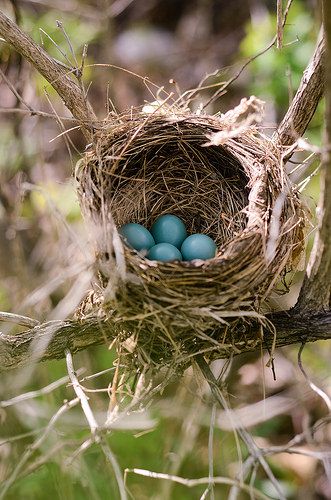Blue jay eggs are typically light blue with black markings, laid by female blue jays. These eggs are known for their vibrant color and distinctive appearance.
Blue jay eggs are carefully incubated and cared for by the female blue jay until hatching. These eggs play a vital role in the reproduction and continuation of the blue jay species.
The Life Cycle Of Blue Jay Eggs
Blue Jay eggs go through a fascinating life cycle. The process starts with nest construction and egg laying. During this time, the female Blue Jay meticulously builds a nest using twigs, grass, and other materials. After the nest is complete, she lays her eggs, usually in groups of 2-7.
The incubation period follows, with the female bird carefully sitting on the eggs to keep them warm. The male Blue Jay also assists in parental care by bringing food to the female. Once the eggs hatch, the early nestling stage begins.
The hatchlings are initially blind and naked, depending on their parents for constant care and feeding. As they grow, their feathers start to develop, eventually allowing them to fly and become independent. Understanding the life cycle of Blue Jay eggs helps us appreciate the incredible journey these birds go through before reaching adulthood.
Characteristics And Appearance Of Blue Jay Eggs
Blue Jay eggs are characterized by their size, shape, and coloration. They are approximately 1 inch in length and ovoid in shape. The eggs have a bluish-green color with brown speckles, which helps them blend into their surroundings for protection.
One unique feature of Blue Jay eggs is their adaptability to various environments, allowing them to thrive in diverse habitats. When compared to eggs of other bird species, Blue Jay eggs stand out due to their vibrant blue hue and distinct markings.
These characteristics make them easily distinguishable and fascinating to bird enthusiasts and researchers alike. Understanding the features and appearance of Blue Jay eggs provides valuable insights into their reproductive strategies and the role they play in the ecosystem.
Significance And Impacts Of Blue Jay Eggs In Nature
Blue Jay eggs play a significant role in the ecosystem and food chain. These eggs serve as a vital food source for predators, contributing to the balance of nature. Blue Jays have developed several survival strategies to protect their eggs from predators, employing camouflage and secretive nesting habits.
However, despite their efforts, threats such as habitat loss and human disturbance pose challenges to the survival of these eggs. Conservation efforts are crucial to safeguard their existence and maintain the delicate equilibrium within the ecosystem. It is essential to raise awareness about the importance of Blue Jay eggs and their conservation in order to protect these remarkable creatures and the diverse web of life they are a part of.

Credit: en.wikipedia.org
Conclusion
Blue Jay eggs are fascinating marvels of nature, showcasing the intricate beauty of the avian world. These distinctive eggs, with their pale blue coloration and intricate speckles, are a testament to the ingenuity and adaptability of Blue Jays. The unique design and composition of these eggs serve as protective shields, ensuring the survival of the Blue Jay species.
Through their careful nesting practices, Blue Jays ensure that their eggs are safe and secure, hidden from predators and the elements. The process of egg development and hatching is a remarkable journey that highlights the resilience and determination of these incredible birds.
As Blue Jay eggs hatch, they usher in new generations of these vibrant and resourceful creatures. Observing Blue Jay eggs is not only a captivating experience, but it also reminds us of the delicate balance and interconnectedness of the natural world.
By understanding and appreciating the wonders of Blue Jay eggs, we can foster a greater appreciation for the diversity and intricacies of the avian kingdom.







